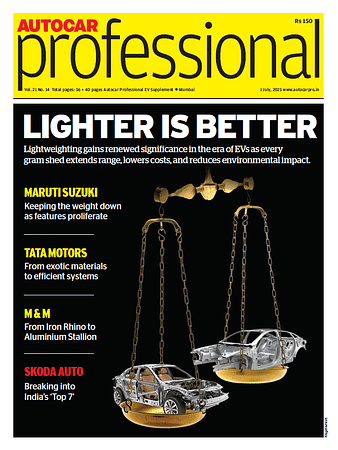Siemens’ digital twin tech helps MobileDrive enhance ADAS for next-gen autonomous driving systems
MobileDrive’s primary interest was to use a model-based framework to develop the algorithms and software controls for common and advanced ADAS applications
Siemens Digital Industries Software has announced that MobileDrive has adopted a model-based systems engineering (MBSE) approach to support its Advanced Driver Assistance Systems (ADAS) development, using the Siemens Xcelerator portfolio and its comprehensive digital twin technology.
By leveraging Siemens’ expertise in the digital thread, MobileDrive has accelerated its progress to build next-generation autonomous driving systems. Founded in 2021 as a joint venture between FIH Mobile and Stellantis, MobileDrive is focused on developing infotainment, telematics and a cloud service platform, together with ancillary hardware and software. Combining topnotch innovation capabilities with over 15 years software/hardware integration experience, MobileDrive is the first company in Taiwan capable of providing complete in-vehicle solutions with cutting-edge AI technology.
Aiming to deliver the highest quality software to meet market demands speedily, MobileDrive’s primary interest was to use a model-based framework to develop the algorithms and software controls for common and advanced ADAS applications, such as Lane Keep Assist (LKA), Emergency Lane Keeping (ELK), Lane Following Control (LFC), Auto Lane Change (ALC), Emergency Steering Assist (ESA), and Autonomous Emergency Steering (AES).
Siemens’ Simcenter Engineering and Consulting services team worked with MobileDrive to deliver a complete methodology and roadmap for its ADAS vision while developing the control algorithms and building a detailed scenario-based system model including sensors and vehicle dynamics, based on market led full vehicle requirements using the Siemens Xcelerator portfolio of software and services.
This systems model was then applied to a virtual test environment allowing the MobileDrive team to observe vehicles as a true digital twin to quickly uncover and address both system and software performance issues earlier in the development cycle.
According to Siemens, this helped MobileDrive to realise a more effective and reliable software development process before a physical prototype was even built. This was due to their newfound ability to verify ADAS software features early in the digital twin environment, reducing the effort of hardware-in-the-loop (HiL) and vehicle testing.
“The automotive industry is undergoing major transformations to better satisfy the needs of users in diverse scenarios and enable a more intuitive, seamless in-vehicle user experience and we have established the key sophisticated technologies and actively collaborated with reliable partners,” said Winston Hsu, CTO at MobileDrive. “Thanks to our collaboration with Siemens, we are able to bring our products to market in a much more streamlined, efficient manner.”
ALSO READ:
KPIT to accelerate Honda’s software-defined mobility drive
Continental and Infineon develop new E/E architecture for software-defined vehicles
Qualcomm targets software-defined vehicles with Snapdragon automotive 5G platform
RELATED ARTICLES
Volkswagen Group sells 465,500 BEVs worldwide in first-half 2025, up 47%
With strong growth in Europe (+89%) and the USA (+24%), despite a sales decline in China (-34%), the VW Group’s global B...
Skoda begins sale of made-in-India CKD Kushaq in Vietnam
Before production started, pre-series Kushaq vehicles covered over 330,000 kilometres on a variety of Vietnamese roads a...
Six Japanese companies join forces to expand use of recycled materials in new vehicles
Denso, Toray Industries, Nomura Research Institute, Honda Motor, Matec Inc and Rever Corporation have set up the BlueReb...





 By Autocar Professional Bureau
By Autocar Professional Bureau
 23 Mar 2023
23 Mar 2023
 6915 Views
6915 Views









